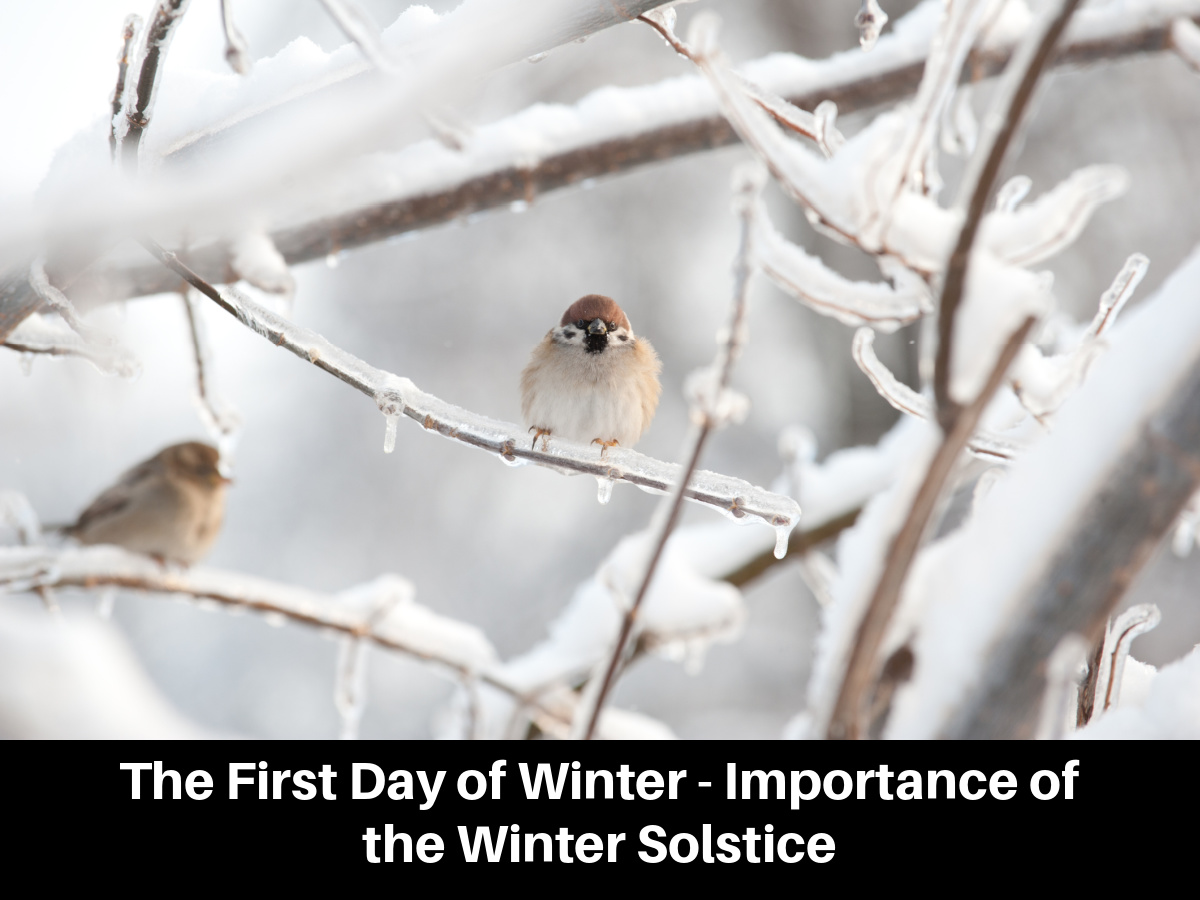The first day of winter is a scientific transition of seasons. There are many spiritual connections to the wintertime. But, in general, it simply marks the beginning of wintertime and the shortest day of the year. That isn’t to say it is the coldest day of the year because there’s a lot more to the winter solstice than that.

What Is Winter Solstice?
The winter solstice is the first day of winter, which varies each year. It occurs when the earth reaches the maximum tilt away from the sun. During this time, the sun is as low as it can be in the northern hemisphere and the highest it can be in the southern hemisphere.
Aside from the technical side of the wintertime solstice, there is a spiritual side. In Eastern Asia, it is a celebration complete with rituals to not catch colds. In Germany, Yule is originally celebrated during the start of wintertime. The solstice is also a holy day for traditional Hindi people.
When Is Winter Solstice?
The winter solstice has a December or June date, depending on which hemisphere you live. This is bookended by the equinox, which is in March or September, again depending on the hemisphere.
To better understand the date differences of the commencement of wintertime, take a look at this table which outlines the upcoming winter solstices. The date of these solstices may change by one day as the time the year rolls around because the time of the solstice which is in some cases near midnight.
| Year | Northern Hemisphere Date | Southern Hemisphere Date |
| 2023 | December 22 | June 21 |
| 2024 | December 21 | June 20 |
| 2025 | December 21 | June 20 |
| 2026 | December 21 | June 21 |
| 2027 | December 22 | June 21 |
| 2028 | December 21 | June 20 |
What Happens On Winter Solstice?
There’s a lot of science behind what happens on the winter solstice. Some of it doesn’t make sense, such as why a lower sun means a colder temperature. But with a bit of an explanation, it will all come together.
The Sun is Low
On the winter solstice, the sun is the lowest it can be in the northern hemisphere, and the highest it can be in the southern hemisphere.
The day after the winter solstice, the sun begins to change its path, going north until it reaches the opposite point in the summer solstice. Then it starts going south until the wintertime solstice when the cycle begins again.
Shortest Day
The winter solstice is the shortest day of the year in the northern hemisphere. This is because the sun is so low that it doesn’t take long for the sun to travel across it. However, the longest day of the year occurs during the “winter solstice” in the southern hemisphere.
Equinox
The equinoxes are the opposite of the solstice. They occur in the spring and fall, signifying the end of summer and wintertime. During this time, the days and nights are relatively equal. The winter solstice signifies the end of that, and longer nights begin.
Cold Temperatures
The days leading up to the winter solstice are cold in the northern hemisphere. However, the winter solstice signifies an even greater lowering of the outdoor temperature.
This is due to many factors, even though the solstice is not usually the single coldest day of the year.
When Is The First Day Of Winter?
There are two types of beginnings to each season—one that most civilians recognize and one meteorologists recognize.
Astronomical
The astronomical first day of winter isDecember 21 or 22 in the northern hemisphere and June 20 or 21 in the southern hemisphere. This beginning of wintertime is based on the position of the sun in relation to the earth and is what most people call the actual first day of wintertime.
Meteorological
The meteorological first day of winter is an alternative winter solstice. It occurs on December 1st of each year. This is based on the calendar.
Unlike the astronomical first day of wintertime, it is the same day each year. However, because it is not based on the sun’s position, it is not a solstice. The only purpose of this first day of the colder season is to track weather records.
Why Does The First Day Of Winter Change Each Year?
The first day of winter is not always on the same day because of leap year. This doesn’t necessarily mean that the date changes every four years, but because of the changes in the year length, it changes over time.
This causes the date to shift every so often, though it is always different depending on your time zone. The date of the beginning of wintertime may be different for you than it is for someone in a time zone one away from yours.
However, if you refer to the meteorological seasonal change, then the first day of wintertime is the same each year.
